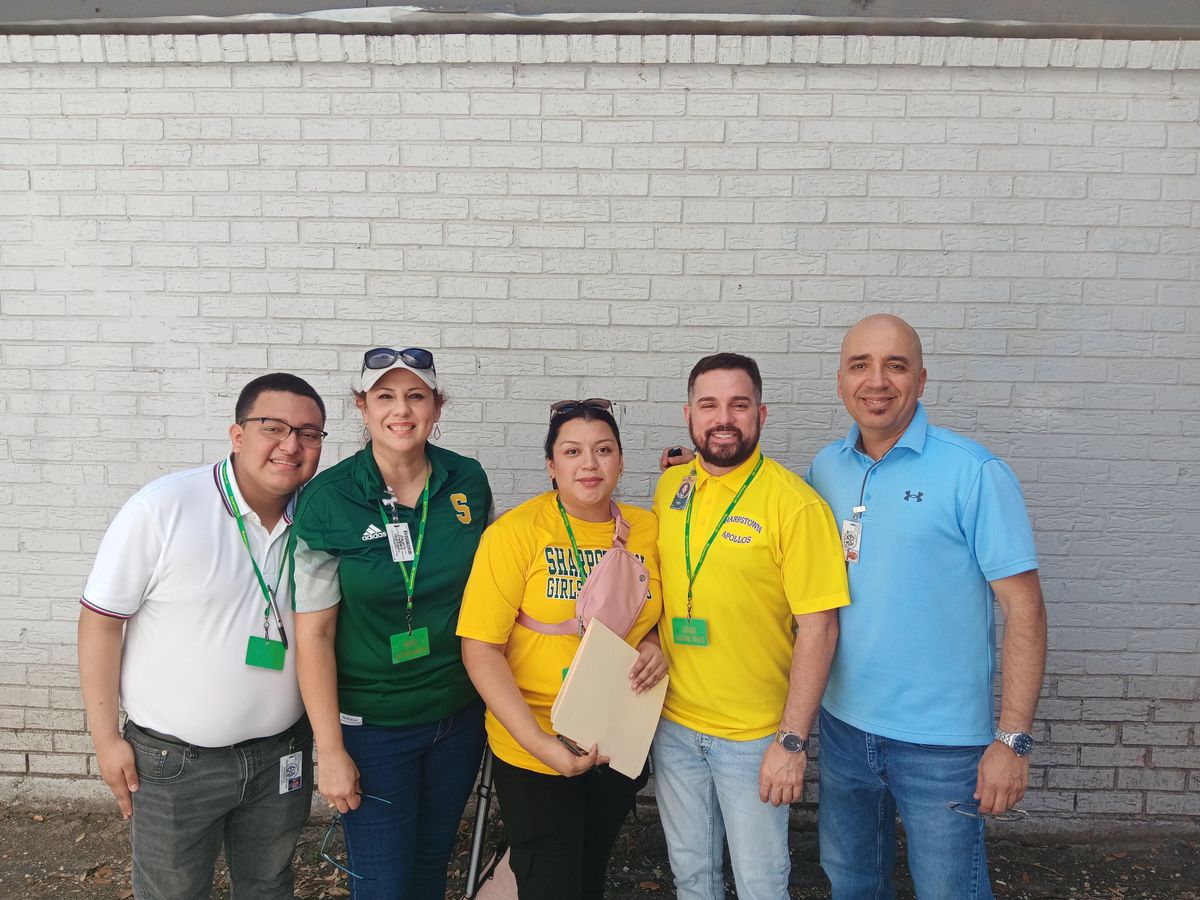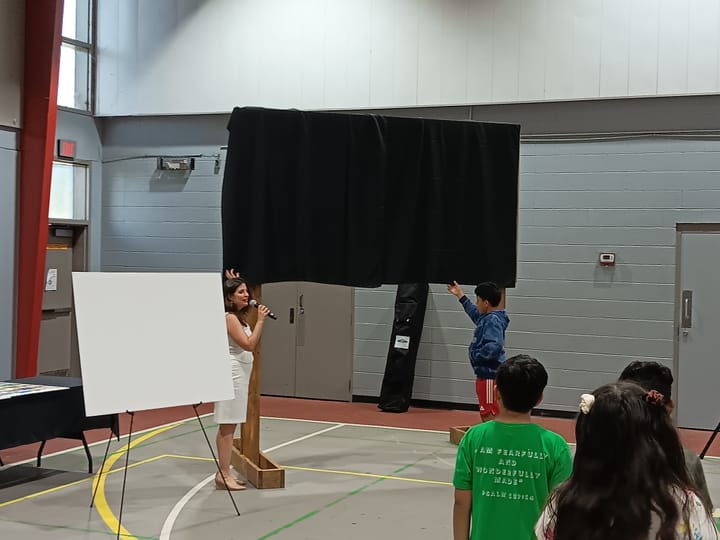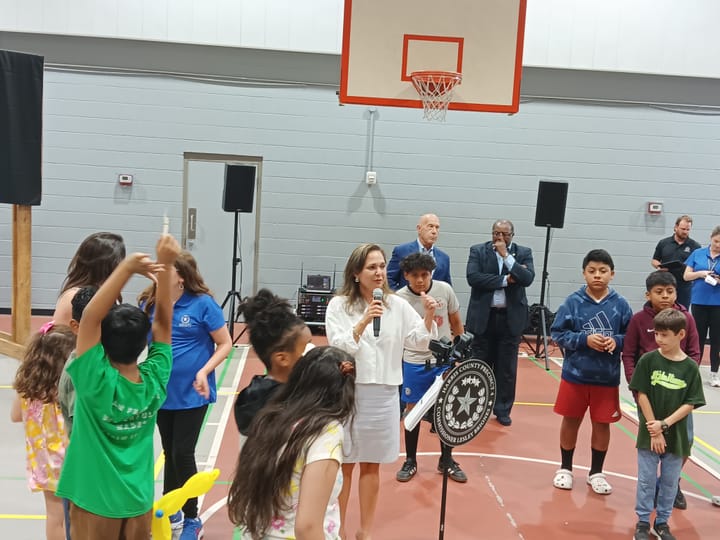Questing to Get Sharpstown High Dropouts Back in School

“There’s nobody there.”
Principal T.J. Cotter peers at the apartment’s broken windows through the white metal lattice of the storm door on the outside of the walled patio. All four apartments in the two-story building have jagged windowpanes and interiors stripped to the studs.
Behind Cotter, a team member speaks up: “That building caught on fire.”
Cotter is the new principal of Sharpstown High, and he’s leading a team on the school’s annual Grads Within Reach Walk. Their mission? Find students who have dropped out and persuade them to re-enroll.
Sometimes, finding them is the hard part.
Earlier that morning, a hot-but-not-yet-sweltering Saturday (September 9), Cotter met with fourteen teachers and staff around a long conference table at Sharpstown High.
He started laying down the game plan. “There’s a little over sixty students that we’re trying to recapture.”
“That’s it?” said someone, followed by an excited “Okay!” (emphasis on the “kay”).
Several people clapped.
Sharpstown High has had a high annual dropout rate for a while. In the 2020-21 school year, it was 7.2%. It’s not just a COVID problem: the dropout rate was 5.4% in 2017-18 and 6.5% in 2018-19.
Meanwhile, across HISD, the average dropout rate has consistently hovered around 4%. Across Texas, it’s been around 2%.
Sharpstown High has been trying to lower the school’s dropout rate through the annual Grads Within Reach Walk. Teachers and staff split into groups, volunteering their time to drive to local apartment complexes and visit students who have dropped out.
Cotter says the message is, “You are missed at school…please come back.”
At the meeting, he reminds the volunteers that Sharpstown High offers a “grad lab” to help students get back on track. They can take self-paced courses through Apex to make up for classes they have failed. They also have alternatives like Liberty High School, designed for students aged 17-25 who are also working full-time jobs.
“The goal is to get them enrolled back in HISD, not necessarily at Sharpstown,” says Cotter.
Lori Elzie, the student info rep with curly, reddish-purple hair, instructs the volunteers to get as much information as possible about each student's situation: “I need to know every little detail...If they're incarcerated, put it in the comments."
The volunteers split into four groups, each getting a folder with the names and addresses of several students.
Principal Cotter’s group includes Aileen Castro, administrative assistant, Brian Quintero, the office manager for HISD’s west division, Marivelia Varrera, the senior executive director for Sharpstown and Westbury theater, and Mario Mejia, the west division coordinator.
Their first stop is the set of burned-out gray brick apartments. Cotter heads to the leasing office. The manager doesn’t know where the family moved, but says that the fire happened a year ago.
The next stop is a complex with reddish brick buildings and red doors. One apartment has a new resident. At another, the family doesn’t live there anymore. At another, someone peeks through the blinds but doesn't answer the door.
The team leaves a folded flyer in the door and moves on. Castro remarks to Cotter that his firm knocking might scare the families.
At the next stop, a barking dog tries to leap out of a fenced apartment patio and nearly bites Castro.
The team circles the confusingly numbered complex, searching for the right apartment. Finally, after asking a resident for directions, they find it. Well, sort of.
Cotter knocks, more lightly this time. “Was that better?”
A woman opens the door. Her five-year-old daughter (educated guess) stands in front of her, wearing pink mouse ears and holding a doll.
As Castro translates from Spanish, the woman says she knows the student in question, but isn’t her mom. She says the student lives in another apartment and is “hiding” because she’s pregnant.
As the team walks away, Mejia says, “Just think about it with all this bullying…who wants to go to school pregnant?”
At the next complex, with its long, turreted buildings, someone peeks through the blinds of an apartment but doesn’t open the door (again). The team leaves a flyer in the door (again).
At another apartment, a kid gets his face right up to the blinds, and then a woman opens the door. She says her family just moved in and she doesn’t know where the old residents went.
It’s getting to be a familiar story.
Based on the walk, it seems like several students just move without telling the school. Perhaps some enroll somewhere else.
But Mejia says that many students quit school outright: “They always have someone telling them, ‘You don’t have to go to school. Look at me—I’m successful, [I'm] in business. Come work for me.’”
Mejia says there are several other “risk indicators”: it’s more likely for students to drop out if they “don’t speak the language well,” they have “discipline issues,” they are “not legally in the country,” they’re pregnant, or they're "economically disadvantaged."
According to the latest TEA report card, 83.4% of Sharpstown High students are economically disadvantaged. And 55.6% are emergent bilingual/EL, meaning they're not native English speakers and they're still learning the language.
Mejia acknowledges the struggles of students, but he still thinks it’s sad when they abandon public education: “It’s free, and they don’t take advantage of it.”
But according to HISD’s press office, six students re-enrolled during the walk. Seventeen had moved, and twelve didn’t answer the door, even though teams confirmed that they still lived at the listed addresses (by checking with their leasing offices).
Of the students who answered the door, how many declined to re-enroll?
Zero.
Perhaps that says something about the power of human connection, of teachers willing to show up to a student’s door on a Saturday. Whatever the teams said to those six students, it worked.
The problem was finding them.
According to Principal Cotter, school staff have been doing follow-up visits with students who didn't answer the door the first time. But as of the Sharpener's last request, the results of the follow-ups were not yet available.




Comments ()